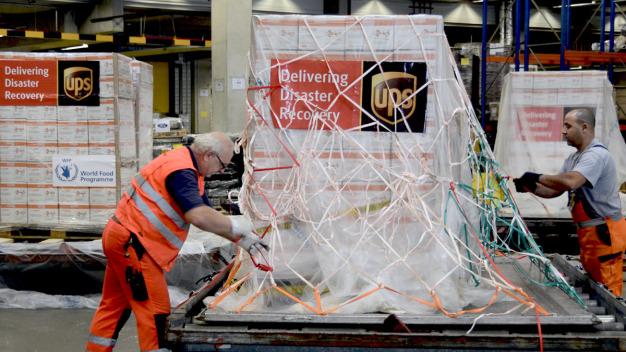The UPS Approach to Giving After Disasters
Strategic philanthropy helps a company’s reputation and brand, but if you really want to mobilize an organization, you need to go further.

One of the biggest needs after a disaster is logistics – getting food, water, medicine and other supplies to the affected region.
UPS has leveraged its expertise to become a leader in the field, routinely winning awards for its contributions around the world.
Eduardo Martinez, the president of the UPS Foundation and UPS’s chief diversity and inclusion officer, spoke with Harvard Business Review about how the company maximizes the benefits of its work. Edited excerpts follow.
HBR: What has UPS learned from years of responding to disasters?
Martinez: We focus not just on disaster relief but also on preparedness, post-crisis recovery and supply chain logistics. We need to play to our strengths to have a multiplier effect.
This is not sudden onset activity that starts when there’s a disaster. We devote funding, expertise, and engagement to it year round.
HBR: UPS is a logistics company so it’s obvious how it can help. What about an accounting or consulting firm?
Martinez: Every private sector company can play a role.
Humanitarian relief agencies need consultancy and technology support. And companies operating in at-risk areas need to become more resilient.
A study in New York City after Hurricane Sandy found that 30 percent to 40 percent of the small and medium-sized businesses affected by the storm never came back.
Some communities have appointed “resiliency officers,” who coordinate efforts to help companies survive disasters. Private sector firms can help with endeavors to make smaller companies more resilient.
HBR: Do firms ever “help” in ways that are counterproductive?
Martinez: That’s a classic problem. After the Haiti earthquake we got a call from a global customer of ours looking to donate thermal blankets – in July, in the tropics.
Whenever we get a call from a company offering to send something, we say, “Thank you, hold on, let’s check with the people on the front lines.”
If there’s no need for what the company is offering, we’ll explain what is needed – water, tents and lanterns. We manage our customers in this way so that we don’t clog the supply chain.
HBR: What else should companies keep in mind?
Martinez: Not every disaster is a global event. Much of what we do involves local mobilization.
There was severe flooding in India recently, but it hasn’t attracted global attention. There has been another Ebola outbreak. The California fires aren’t always in the news.
We try to stay tied into events around the world whether they become a big story or not.
HBR: How has technology changed the way you respond?
Martinez: It helps us be more effective. We have used drones to deliver vaccines and blood supplies in Rwanda, sometimes making more than 50 deliveries a day.
We’re using scanners and cards to track and distribute food to Syrian refugees. Before that, pen and paper were being used to track distributions to camps with 200,000 people.
The new system ensures that everyone gets the right nutrition, and it has reduced lines, spoilage, hoarding and reselling.
HBR: What does UPS get in return for this work?
Martinez: Strategic philanthropy helps a company’s reputation and brand, but if you really want to mobilize an organization, you need to go further.
We’re learning as a business from these efforts – for instance, the Rwanda drone project gives us experience with a new technology. We’re becoming acquainted with different cultures and how to work in different markets.
We’re also inspiring our people. Companies that do this work to generate nice headlines leave a lot of value on the table.
This Q&A originally appeared on Harvard Business Review and was republished with permission.

